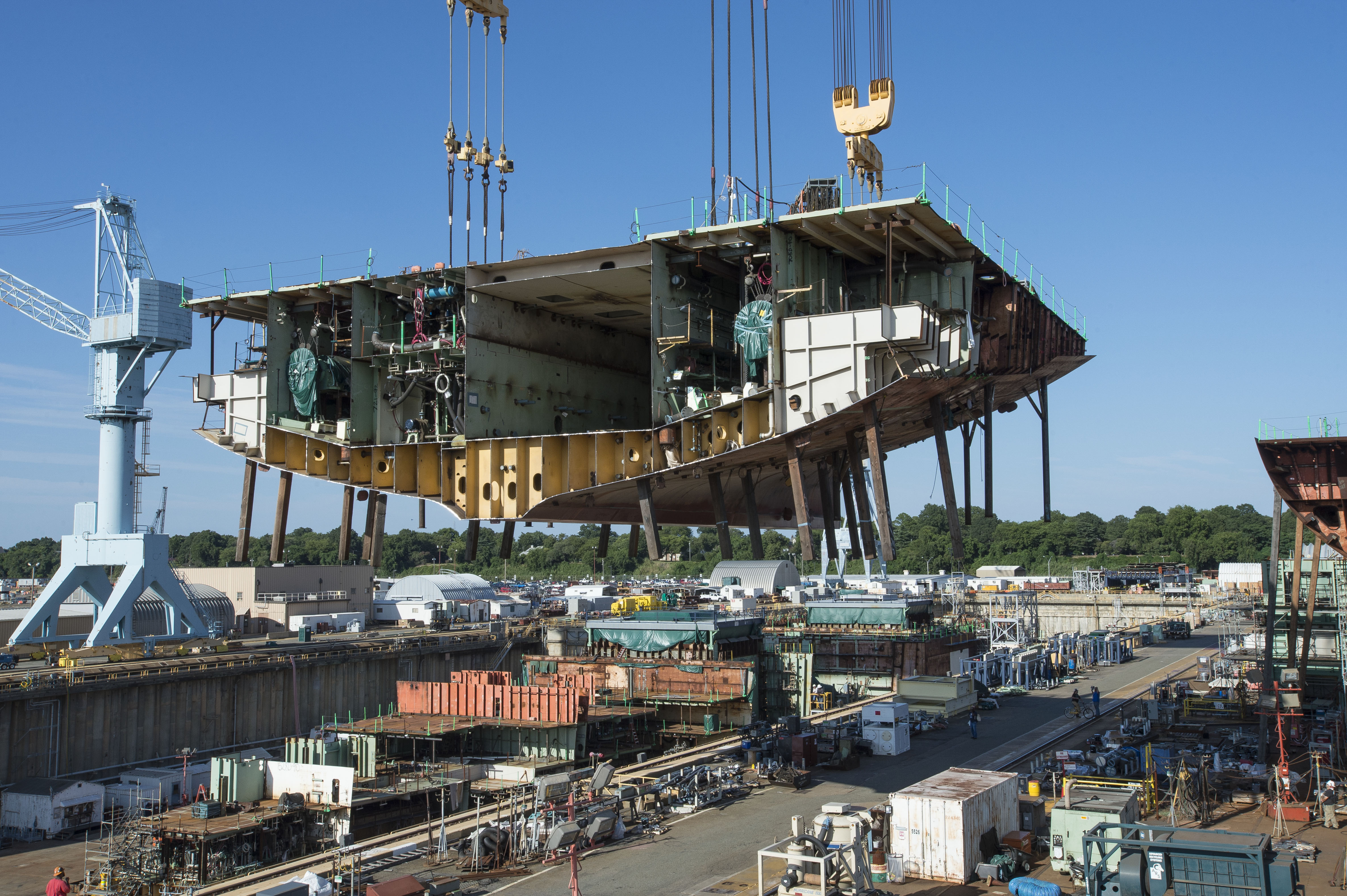
WASHINGTON, D.C. — The chairman of the House Armed Services seapower and projection forces subcommittee believes the Navy can reach a 355-ship fleet in the 25- to 30-year timeframe, given industrial base capacity and expected funding levels.
Rep. Rob Wittman (R-Va.) told USNI News today that, based on a Congressional Budget Office report, achieving a 355-ship fleet in under 20 years would be impossible due to industrial base capacity, and so the question for lawmakers is now whether they want to aim for a 20-, 25- or 30-year track.
“I believe that we can truly send that signal (to industry) and we can get that production ramped up to where we can get to 355 I think somewhere in the 25- to 30-year timeframe,” Wittman said at an event cohosted by the Center for Strategic and International Studies and the U.S. Naval Institute.
After the event, he told USNI News that spending an additional $5 to $6 billion a year above recent averages for shipbuilding would get the Navy to 355 ships in 25 years. While he would like to speed up that timeline a bit, the reality of continuing resolutions, budget caps and other political hurdles may slow the shipbuilding spree to a 25- to 30-year pace instead.
“I would like to see us move to the left, but I think it begs the question more fundamentally, this is the track upon which we need to dedicate resources, and if we want to get there more quickly we need to dedicate additional resources, but there’s a certain point where even if we dedicate additional resources you can’t get there because you don’t have the capacity in the industry,” he said.
During the event, Wittman said the Fiscal Year 2018 National Defense Authorization Act would be an important step in setting this pace for the Navy’s buildup.
“For us, being able to set the proper glide path to get to 355, we need to understand what capacity is in the industry; how much is there; what can they build; how do we make sure that we create the certainty where the industry is willing to invest or willing to make the commitment; say, yes this is serious, this isn’t going to be a one- or two-year endeavor, this is going to be done over a long period of time,” he said.
“So our charge this year with the NDAA is to as aggressively as we can begin that glide path to 355. And I think you have to send that signal, I think you have to look at where can we get industry to start to crank up that effort. It won’t necessarily reveal itself in additional ships in the immediate year … but we’re going to have to push the issue early on.”
Rep. Joe Courtney (D-Conn.), the ranking member of the seapower subcommittee, said at the same event that Congress can do more to help the Navy and industry get to 355 more quickly and efficiently. Citing the National Sea-based Deterrence Fund – a pot of money that funds ballistic-missile submarine construction and allows contracting authorities such as multi-year procurement, continuous production and cross-class procurement between the boomers, attack submarines and aircraft carriers – Courtney said the fund is “the real poster child in terms of really promoting these efficient authorities” to reduce the time and cost of shipbuilding.
He said he would spend this year “challenging the appropriators and some of the folks at the Pentagon to really break out of the annual budget system of appropriating and authorizing ship construction and … look at more multi-year approaches. It just creates tremendous opportunities for efficiencies, continuous production, which is a great way to help the supply chain.”
Though the House and Senate appropriations committees initially pushed back strongly against the National Sea-based Deterrence Fund, as it took away their annual control over shipbuilding spending, Courtney said lawmakers “almost they have no choice” if they want to get to 355 ships in this budget environment.
In addition to cost savings, Courtney said the fund would create schedule benefits as well. Wittman said there had been “just a few hiccups with the Columbia class” – referencing old and recent delays on the new boomer program, which has now eaten away all its schedule margin and must stick closely to its schedule to avoid the first-in-class Columbia missing its first scheduled deployment. Courtney said in response that “the Sea-based Deterrence Fund efficiencies that we got authorized really still haven’t been sort of factored in totally in terms of the Navy’s (schedule) projections. I actually think that if they really embrace those authorities and implement them, we could even buy back some time in terms of schedule for Columbia construction.”





